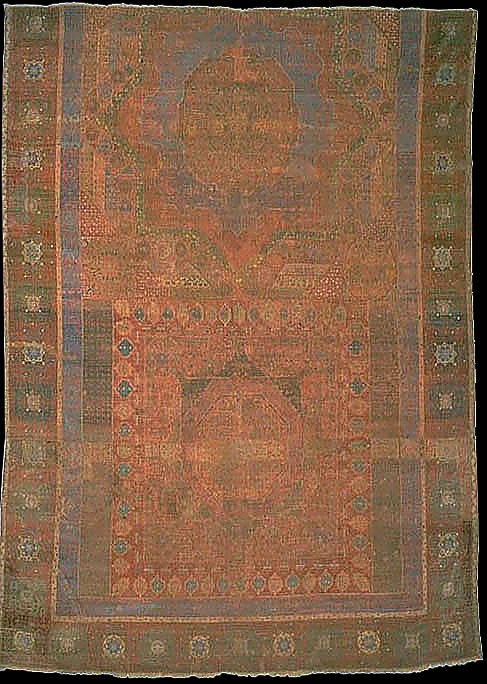|
Mamluk Carpet fragment, late 15th century. The Textile Museum
R16.3.1. Acquired by George Hewitt Myers in 1925. (complete at bottom)
387 x 277 cm, incomplete
Mamluk
carpets are characterized by intense play with pattern, form, and
color, a fascination that is also apparent in the ornamentation of
Mamluk architecture.
Here, a seemingly endless variety of patterns
relies upon horizontal and vertical reflections of an asymmetrical
fundamental region.
Sometimes a border is treated as a plane,
with designs repeated to form field patterns. Otherwise rare among
Oriental carpets, this unusual feature is typical of Mamluk carpets
from the late 15th century.
|

